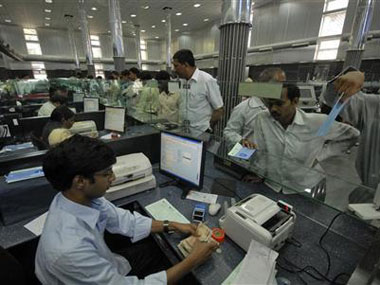Finance Minister P Chidambaram yesterday said the government has asked the Reserve Bank of India to expedite the process of issuing new bank licences. Firstpost takes a look at the issues at stake.
Bone of contention
The issuance of new bank licence has been a bone of contention between the RBI and the finance ministry.
While the RBI wants the government to amend the Banking Regulation Act before giving out licences, the government wants to speed up process.
[caption id=“attachment_526051” align=“alignleft” width=“380”]  It also wants the power to approve acquisition of shares and/or voting rights of 5 percent or more in a bank. Reuters[/caption]
“The process of inviting applications for setting up of new banks in the private sector will be initiated only
after the Banking Regulation Act is amended,” the RBI had said in its draft guidelines.
According to a recent research note by Credit Suisse, the central bank has sought an increase in voting rights of shareholders of private banks to 26 percent from 10 percent now and those of public sectors banks to 10 percent from 1 percent.
It also wants the power to approve acquisition of shares and/or voting rights of 5 percent or more in a bank.
The RBI also wants the power to supersede the board of directors of a bank and the right to inspect associate businesses of the promoter as well.
The promoters, their group entities, NOHC and the proposed bank shall be subject to the system of consolidated supervision by the RBI.
Explaining the government’s stance, the finance minister said, “The whole process of issuing of bank licences will take at least six-eight months. By that time, we will amend the Act.”
“The banking regulation Act will be amended in the winter or the budget session,” he assured.
The front-runners
Not many corporates are likely to the get banking licences, as the draft norms that have been released by the RBI are stringent.
The RBI has been traditionally averse to giving bank licences to companies.
According to Credit Suisse, the front-runners for a licence are IDFC, L&T Finance and Aditya Birla Nuvo Ltd “as they meet most of the eligibility criteria”.
“Regulation capping exposure to promoter-related entities (incl. suppliers/customers) may be the stumbling block for NBFCs like Bajaj Finance and M&M Finance,” it said.
It also sees merger and acquisition activity gaining pace in the sector “since the new licensees will need toquickly build a deposit franchise”.
It does not expect the RBI to allow the new banks to stagger their adherence to reserve requirements.
This is likely to make old-generation private banks likely targets of the new banks, it said.
Incidentally, shares of L&T Financial Holdings have been on the rise this month. The stock, which had closed 31 October at about Rs 54, is trading at Rs 87 now.
History
This is the third time the central bank is issuing new licences. Earlier, the RBI issued 10 licences in 1993. After that, two licences were again issued in 2000.
“… These new-gen banks have carved a 14% market share and outdone the older banks on productivity and profitability front,” Credit Suisse said.


)
)
)
)
)
)
)
)
)



